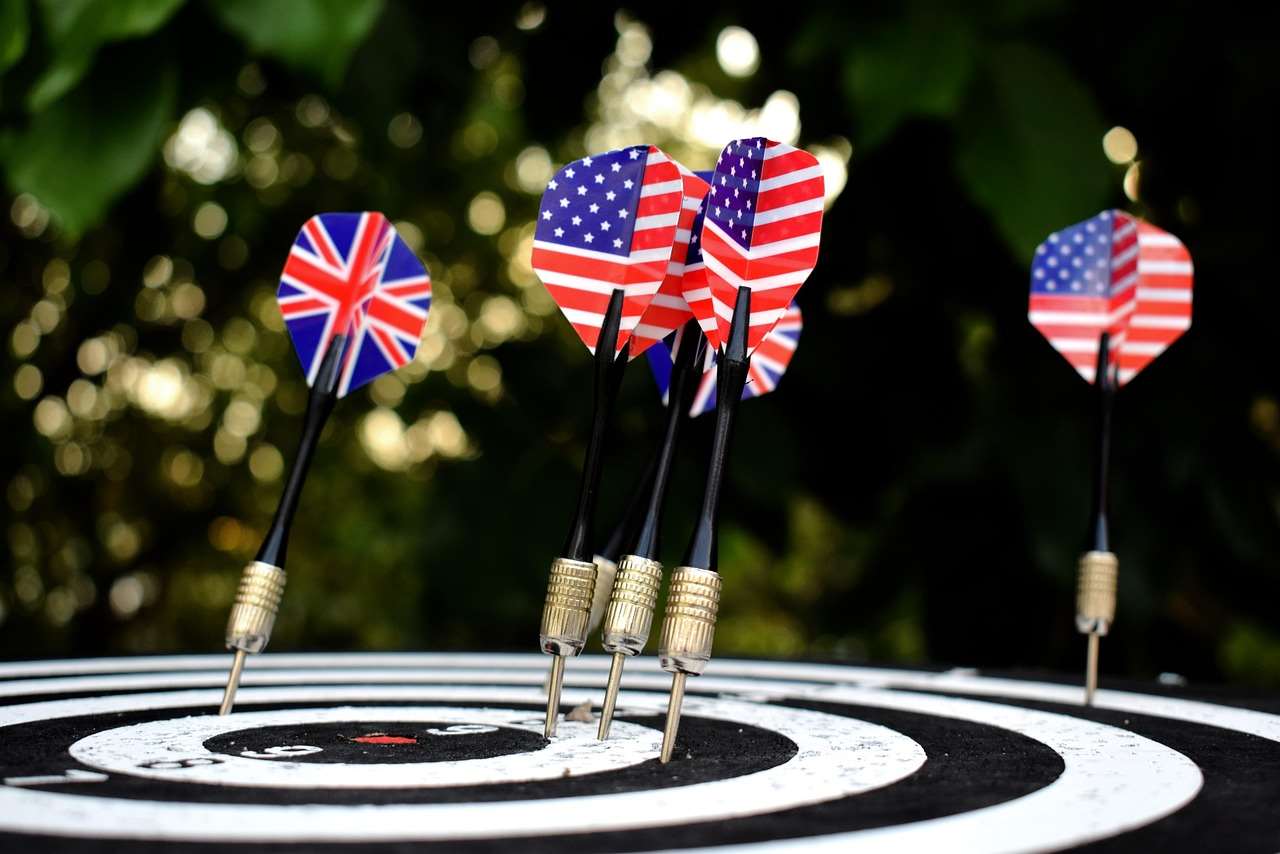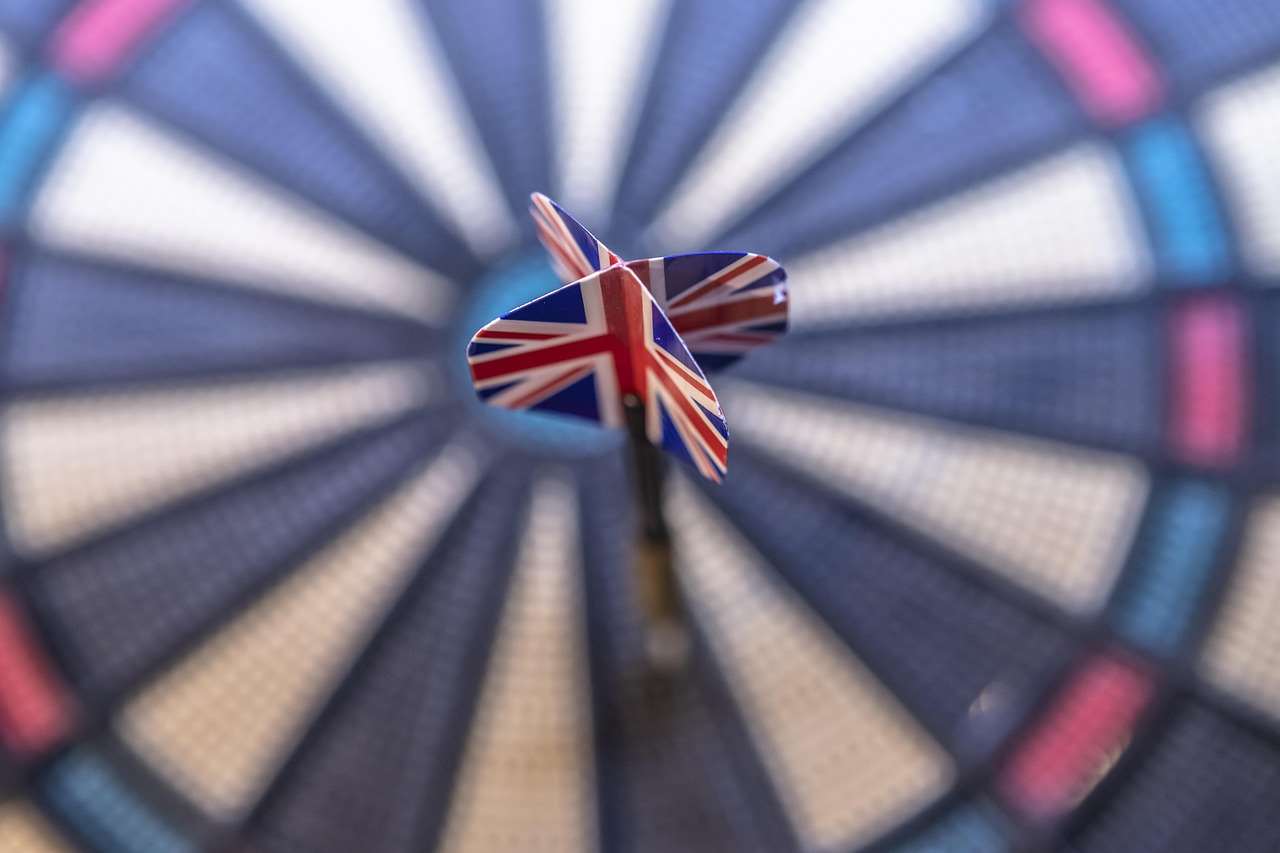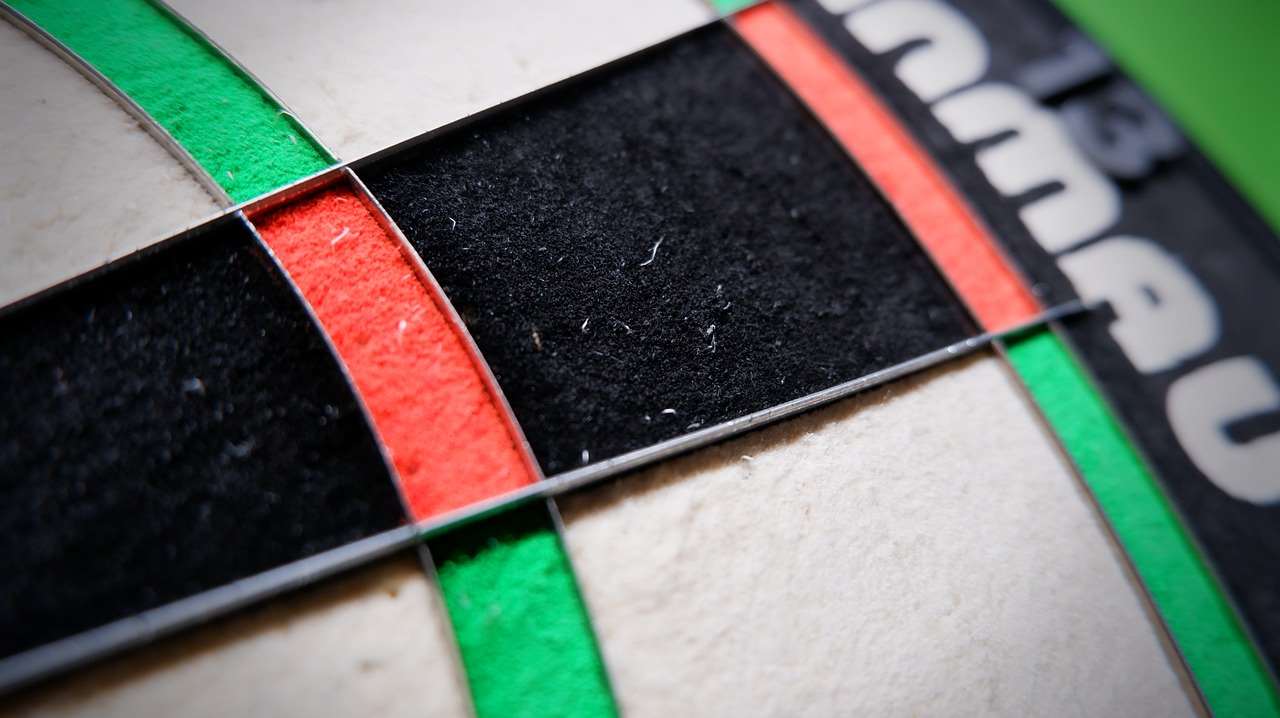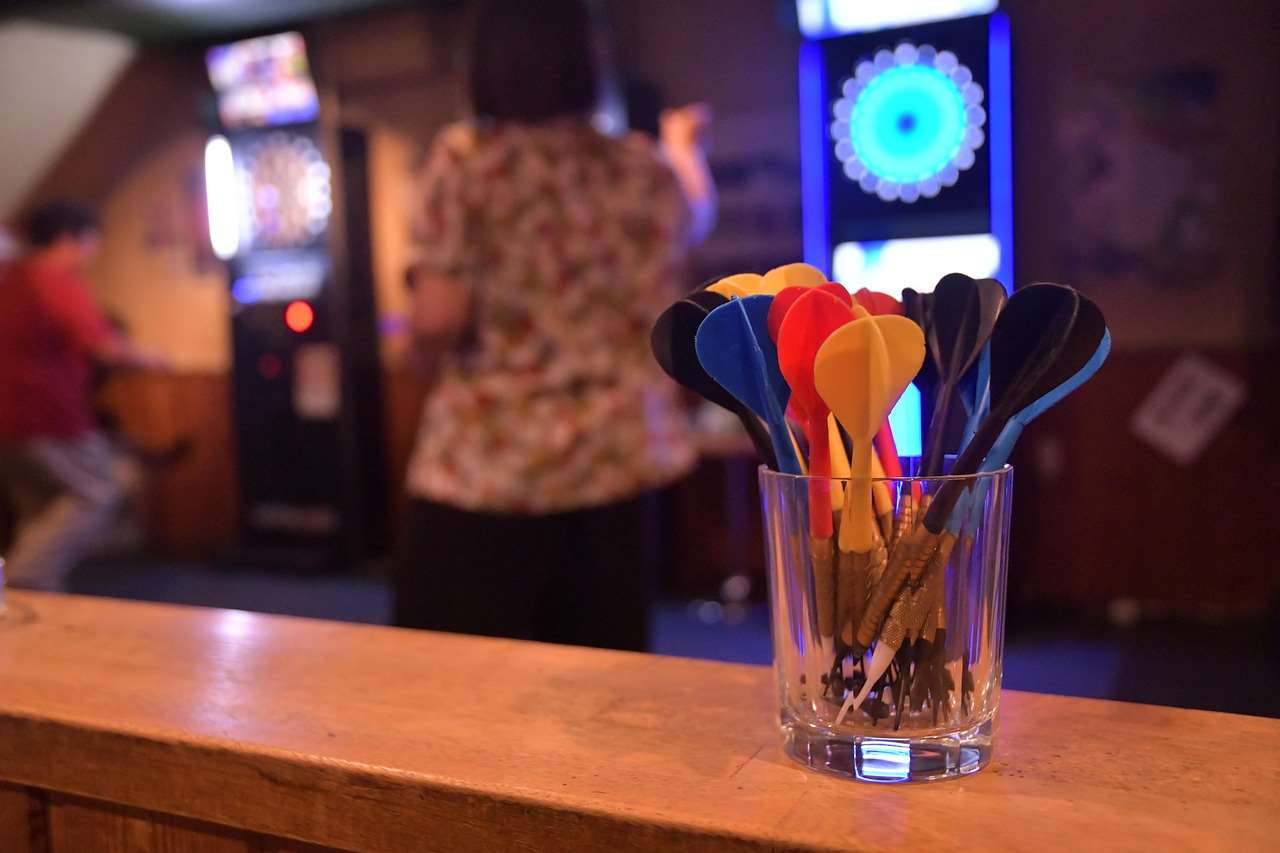The key to improving your dart game often lies in **adjusting balance point darts** to perfectly suit your throwing style; it’s about finding that sweet spot for optimal control and accuracy. This article will guide you through understanding dart balance, how to adjust it, and the impact it has on your performance, along with tips to fine-tune your darts for peak precision.
⚠️ Still Using Pen & Paper (or a Chalkboard)?! ⚠️
Step into the future! The Dart Counter App handles all the scoring, suggests checkouts, and tracks your stats automatically. It's easier than you think!
Try the Smart Dart Counter App FREE!Ready for an upgrade? Click above!
Understanding Dart Balance and Its Impact
The **balance point** of a dart, also known as the center of gravity, is the point at which the dart will balance perfectly on a fulcrum. This point significantly influences how the dart flies through the air and how it feels in your hand. A dart that is too front-weighted may dip downwards during flight, while a dart that is too rear-weighted might wobble or “kick” upwards. Finding the right balance is crucial for consistent throws and improved scoring.
Factors affecting dart balance include the barrel material (tungsten vs. brass), the barrel shape (straight, torpedo, bomb), the length of the points, and the weight and type of the shaft and flights. Each of these components contributes to the overall distribution of weight, making it necessary to experiment with different combinations to find your ideal setup. The overall weight also contributes, and you can learn more about this by reading Choose Best Dart Equipment.

Methods for Adjusting Balance Point Darts
There are several effective techniques for adjusting balance point darts. These methods range from simple adjustments to more involved modifications. Here are a few options:
- Changing Shafts: Using shorter or lighter shafts shifts the balance forward, while longer or heavier shafts shift it backward. Try different materials like nylon, aluminum, or carbon fiber to see how they affect the feel of your darts.
- Changing Flights: Smaller flights offer less drag and can make the dart fly faster and straighter, potentially requiring a slight shift in balance. Larger flights provide more stability and can compensate for imbalances. Experimenting with different shapes (standard, kite, slim) is also beneficial.
- Adding Weight: Specialized dart weights can be added to the front or rear of the dart to fine-tune the balance. These weights are typically small metal rings or slugs that fit inside the barrel or screw onto the shaft.
- Changing Points: While less common, changing the points can also slightly alter the balance. Longer points tend to shift the balance forward, while shorter points shift it backward. You might consider points made of different metals as well.
- Grip Adjustments: Although not a physical adjustment to the dart itself, modifying your grip can compensate for balance issues. A grip closer to the front can help control a rear-weighted dart, while a grip further back can stabilize a front-weighted dart.
Fine-Tuning Techniques for Precision
Once you’ve made some initial adjustments, you’ll want to fine-tune your darts for maximum precision. This involves carefully observing your dart’s flight path and making incremental changes until you achieve consistent accuracy. Here are some tips:
- Record Your Throws: Use a notebook or app to track your scores and the types of adjustments you’ve made. This helps you identify patterns and determine which adjustments are most effective.
- Video Analysis: Record yourself throwing darts to analyze your form and the dart’s trajectory. This can reveal subtle flaws in your technique that are contributing to balance issues.
- Practice, Practice, Practice: The more you practice with your adjusted darts, the better you’ll become at understanding their behavior and making further adjustments.
Choosing the Right Equipment for Balance Adjustments
Selecting the right dart equipment is paramount for effectively **adjusting balance point darts**. Investing in high-quality shafts, flights, and points will give you more options for customization and ensure that your adjustments are consistent and reliable. Furthermore, understanding the differences between budget and premium darts can also help with making the correct decision. If you are interested in learning more about the differences, read the Difference Budget Premium Darts article. Here’s what to consider:
- Shafts: Look for shafts that offer a good balance of weight and durability. Nylon shafts are a popular choice for beginners, while aluminum and carbon fiber shafts are preferred by more experienced players for their strength and consistency.
- Flights: Choose flights made from durable materials that can withstand repeated use. Polyurethane flights are a good option, as they are both durable and affordable.
- Points: Select points that are compatible with your dart barrel and that offer a secure grip on the dartboard. Steel tips are the standard for steel-tip darts, while plastic tips are used for soft-tip darts.

The Role of Grip and Throwing Technique
While adjusting balance point darts is crucial, it’s important to remember that your grip and throwing technique also play a significant role in your overall accuracy. Even the most perfectly balanced dart will perform poorly if it’s not thrown correctly. Here are some tips for improving your grip and throwing technique:
- Find a Comfortable Grip: Experiment with different grips until you find one that feels natural and comfortable. There’s no one-size-fits-all grip, so it’s important to find what works best for you.
- Maintain a Consistent Stance: Your stance should be stable and balanced, with your weight evenly distributed on both feet. Avoid swaying or shifting your weight during your throw.
- Follow Through: Ensure that you follow through with your arm after releasing the dart. This helps to maintain accuracy and consistency.
Consistency is key when throwing darts. It’s important to practice regularly and focus on developing a repeatable throwing motion. Don’t be afraid to experiment with different techniques, but once you find something that works, stick with it and refine it over time.
Common Mistakes to Avoid When Adjusting Darts
**Adjusting balance point darts** can be a complex process, and it’s easy to make mistakes along the way. Here are some common pitfalls to avoid:
- Over-Adjusting: Making too many adjustments at once can make it difficult to determine which changes are actually improving your performance. Make small, incremental adjustments and test them thoroughly before making further changes.
- Ignoring Your Grip: Your grip can significantly affect the way your darts fly, so it’s important to consider it when making balance adjustments. Don’t try to compensate for a poor grip by over-adjusting your darts.
- Not Practicing Enough: Adjusting your darts is only half the battle. You need to practice regularly to develop the muscle memory and consistency needed to throw them accurately.
- Using Incorrect Tools: Always use the correct tools when making adjustments to your darts. Using the wrong tools can damage your darts or make it difficult to achieve the desired results.

Advanced Techniques for Dart Customization
For serious dart players looking to maximize their performance, there are several advanced techniques for dart customization. These techniques involve more specialized equipment and a deeper understanding of dart aerodynamics.
- Barrel Reshaping: Some players choose to reshape their dart barrels to improve their grip or alter the balance. This can be done using specialized tools and techniques, but it’s important to be careful not to damage the barrel.
- Point Conversion: Converting steel-tip darts to soft-tip darts (or vice versa) involves replacing the points. This can be a complex process that requires specialized tools and knowledge.
- Custom Engraving: Engraving your darts with your name or initials can add a personal touch and make them easier to identify. However, be careful not to engrave too deeply, as this can affect the balance of the dart.
Remember that advanced customization techniques should only be attempted by experienced dart players who are comfortable working with specialized equipment. If you’re unsure about any of these techniques, it’s best to consult with a professional dart technician. You can also learn more about what determines quality when you read What Makes Darts Premium Quality.
Evaluating Your Progress and Making Further Adjustments
After **adjusting balance point darts** and practicing with them, it’s essential to evaluate your progress and make further adjustments as needed. This is an ongoing process that requires patience, observation, and a willingness to experiment.
- Track Your Scores: Keep a record of your scores over time to see if your adjustments are actually improving your performance.
- Seek Feedback: Ask other dart players to watch you throw and provide feedback on your technique and dart flight.
- Be Patient: It takes time to find the perfect balance for your darts, so don’t get discouraged if you don’t see results immediately.
The key to success is to stay persistent and continue making small adjustments until you achieve the desired results. Don’t be afraid to try new things and experiment with different combinations of shafts, flights, and points. With enough practice and dedication, you’ll eventually find the perfect setup for your darts.

Maintaining Your Darts for Optimal Performance
Once you’ve perfected the balance of your darts, it’s important to maintain them properly to ensure optimal performance. Regular cleaning and maintenance can help to prolong the life of your darts and keep them flying straight.
- Clean Your Darts Regularly: Use a soft cloth to wipe down your darts after each use. This will remove any dirt or grime that can affect your grip and the dart’s flight.
- Check Your Points: Inspect your points regularly for damage or wear. Replace them as needed to ensure a secure grip on the dartboard.
- Tighten Your Shafts: Loose shafts can cause your darts to wobble in flight. Tighten them regularly to prevent this.
By following these simple maintenance tips, you can keep your darts in top condition and enjoy consistent, accurate throws for years to come. And if you decide to go with premium darts, you will want to know if they are worth the investment. Take a look at this: Are Premium Darts Worth It.
The Mental Aspect of Dart Balance
While we’ve focused on the physical aspects of **adjusting balance point darts**, it’s important to acknowledge the mental aspect as well. Confidence in your equipment can significantly impact your performance. Knowing that your darts are perfectly balanced for your throwing style can boost your confidence and help you focus on your target.
Conversely, if you’re constantly worried about your dart’s balance, it can distract you and negatively affect your throws. That’s why it’s crucial to take the time to find a setup that you’re comfortable with and that gives you confidence at the oche.

Conclusion
Adjusting balance point darts is an art and a science, requiring experimentation, observation, and a good understanding of your own throwing style. By carefully considering the factors that influence balance and using the techniques described in this article, you can fine-tune your darts for optimal performance. Remember to be patient, persistent, and always focus on maintaining a consistent grip and throwing technique. So, take what you’ve learned and get to the oche and start improving your game! Consider checking out Buying Guide Budget Premium Dart Sets if you want to improve your equipment too.
Hi, I’m Dieter, and I created Dartcounter (Dartcounterapp.com). My motivation wasn’t being a darts expert – quite the opposite! When I first started playing, I loved the game but found keeping accurate scores and tracking stats difficult and distracting.
I figured I couldn’t be the only one struggling with this. So, I decided to build a solution: an easy-to-use application that everyone, no matter their experience level, could use to manage scoring effortlessly.
My goal for Dartcounter was simple: let the app handle the numbers – the scoring, the averages, the stats, even checkout suggestions – so players could focus purely on their throw and enjoying the game. It began as a way to solve my own beginner’s problem, and I’m thrilled it has grown into a helpful tool for the wider darts community.